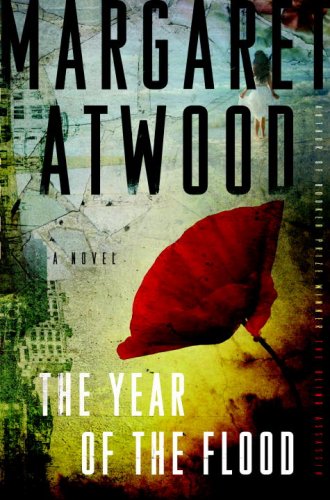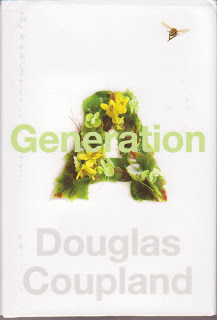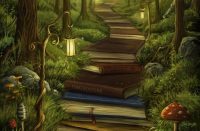Information is important, but stories are essential. While scientists can tell us about the extinction of species and the loss of Arctic sea ice, we need stories to help us make sense of these events.
But we are buried in unfinished stories. After decades of expert analysis, we remain unable to sketch a narrative of how to get from here to a sustainable future. From climate change to the fate of bees, we just don’t know how it will turn out.
Information is important, but stories are essential. While scientists can tell us about the extinction of species and the loss of Arctic sea ice, we need stories to help us make sense of these events.
But we are buried in unfinished stories. After decades of expert analysis, we remain unable to sketch a narrative of how to get from here to a sustainable future. From climate change to the fate of bees, we just don’t know how it will turn out.
Perhaps that’s why there is so much appetite for films and books that know how to finish a story. The big movie this year is Avatar – a tale of conquest and defence of nature and homeland. As with much speculative fiction – recall Orwell’s Nineteen Eighty-Four or the fable at the start of Silent Spring – stories are often not just about the future, but about their own time. They confront the fear that we are walking into disaster, and the hope that we may yet get it right.
In 2009, Canadian authors told two of the more interesting such stories. In Douglas Coupland’s Generation A, bees sting into motion bizarre events involving five characters from around the planet, and Margaret Atwood’s The Year of the Flood takes genetic manipulation and corporate control into grim territory.
Generation A presents a faded future. Bees are extinct, as are fruit trees and flowers, and jars of honey are auctioned at Sotheby’s. A radiation catastrophe in Germany, and generally weird weather, hint that the loss of bees is just the tip of ongoing environmental collapse.
Not that anyone seems to notice. Phones and screens reach everywhere, but people hardly communicate, least of all with nature. Infinitesimal attention spans and the addictive drug Solon deliver an eternal worry-free present. But then nature sends a message: supposedly extinct bees sting five people scattered around the world. Governments and corporations immediately send these people into isolation for endless blood tests for a purpose that slowly comes into focus.
It’s a breezy and funny ride – full of references to pop culture, but briefly wistful when a character mourns the demise of flowers. Yet at times the novel itself seems afflicted by a short attention span: sudden plot turns, quick switches from character to character, contradictions (corporations and governments are omniscient one moment, and fade away the next), and detours into short stories that say little. Visions of horror – such as a scientist plotting to dissect people’s brains – have less impact than a bad Halloween flick.
 The Year of the Flood is far more serious. It depicts a future society in advanced decay. Governments are gone and corporations control whatever is profitable – from sex to security. Outside the corporate compounds, pleebrat gangs roam amidst random death and a general struggle to survive. Life is grim, and then it gets much worse. A ghastly pandemic – the Waterless Flood – spreads like fire across the world, dissolving almost everyone into pink porridge.
The Year of the Flood is far more serious. It depicts a future society in advanced decay. Governments are gone and corporations control whatever is profitable – from sex to security. Outside the corporate compounds, pleebrat gangs roam amidst random death and a general struggle to survive. Life is grim, and then it gets much worse. A ghastly pandemic – the Waterless Flood – spreads like fire across the world, dissolving almost everyone into pink porridge.
But the God’s Gardeners saw it coming. Tending their rooftop gardens, this group of dissenters recycles their energy and possessions, and lives by a green theology that worships eco-saints. (My favourite is Saint Farley Mowat of Wolves.) Toby and Ren, two women who joined the God’s Gardeners by separate paths, somehow survive the Waterless Flood. Both characters are credible and complex, and we experience the horrors of this future through their eyes. Yet their authenticity is also a lament: that these interesting people could be trapped in a world of such shortsighted stupidity.
While Generation A sometimes goes slack, The Year of the Flood is wild, yet precise, its believability making it all the more disturbing. Although bleak, Atwood’s vision is also funny. Gang labels read like a fancy menu: Blackened Redfish, Asian Fusion. But one laughs warily – this is like listening to jokes in a dark alley.
Both novels invoke environmental and social catastrophe, and are intended, the authors insist, to be relevant. But are they – at least beyond being mere cautionary tales?
Some might argue that they have no relation to practical environmental affairs – that they are, after all, only fiction. One can nitpick the factual details. For example, bees are not the only pollinators, so their demise may not have the consequences Coupland invokes. More significantly, in both novels environmental collapse is mainly a device that sets the story in motion. In The Year of the Flood, there is no explanation of how corporations took over, or what caused the Waterless Flood (except a suggestion of corporate fiddling with viruses).
Perhaps this lack of accounting for the past is necessary – what matters more is how characters respond. But this inattention to detail has consequences. Bypassing the decline eliminates the possibility of intervention. Instead, these grim scenarios are made to seem inevitable – the unstoppable unfolding of humanity’s tragic shortsightedness. Presenting doom as our necessary fate can be deeply disempowering.
That’s one argument. But another view recognizes that both Coupland and Atwood are speculating. They are inventing ideas and seeing what happens when they collide. Many such ideas concern our relation with animals. For example, bees play a large role in both novels, not just as victims, but as mediators. Toby learns to talk to them, and their stings provoke the people of Generation A to pay at least brief attention. Bees have always been special, but in the aftermath of colony collapse they have become a cultural commodity.
But other animals are manipulated beyond recognition. The Year of the Flood is populated by bizarre biological experiments, among them the rakunk (part raccoon, part skunk) and the liobam (spliced lions and sheep – wooly but deadly). These combo-creatures exemplify the hazards of seeking perfection and playing God with genetics.
This malignant capacity of science to reshape nature and society, particularly when controlled by corporations, is a theme in both novels. In Atwood’s telling, science is economic and political currency. Corporations pursue unlimited genetic modifications, while dissenters turn this expertise against them, planting genetic time bombs such as microbes that melt highways and mice that attack cars. Both novels are structured so that reading them mimics how scientists study complexity – that is, by assembling hints into patterns that have meaning. Speculative fiction and science may differ in degree, but not necessarily in kind.
Science is just part of the malevolence of corporations in these future worlds. Having taken over the functions of governments by force or stealth, the result is a kind of deadening – not just nature and civility are gone, but also awareness of alternatives and the opportunities to pursue them. The effect is claustrophobic. The isolation experienced by characters in these novels is an allegory for what happens when public life is squeezed out of existence, taking with it the capacity to think about different ways of living. Only the last paragraph of The Year of the Flood offers, perhaps, an opening to something new.
More than any scholarly study could, these stories give a visceral sense of the consequences of privatizing science and public space. Beyond speculating on the decay of nature and the breakdown of society, and what happens when we lose track of what matters, they exhibit the futility of a world in which imagination is forbidden.
Generation A, Douglas Coupland, Toronto: Random House, 2009, 320 pages
The Year of the Flood, Margaret Atwood, Toronto: McLelland & Stewart, 2009, 448 pages
This review originally appeared in New Eco Books, Issue 36.3. Subscribe now to get more book reviews in your mailbox!
Reviewer Information
Stephen Bocking, a regular contributor to Alternatives, is professor at and chair of the Environmental and Resource Science/Studies Program at Trent University and author of A\J’s EcoLogic blog.
You can follow Stephen on Twitter at @BockingStephen or read his blog: Environment, History and Science.













